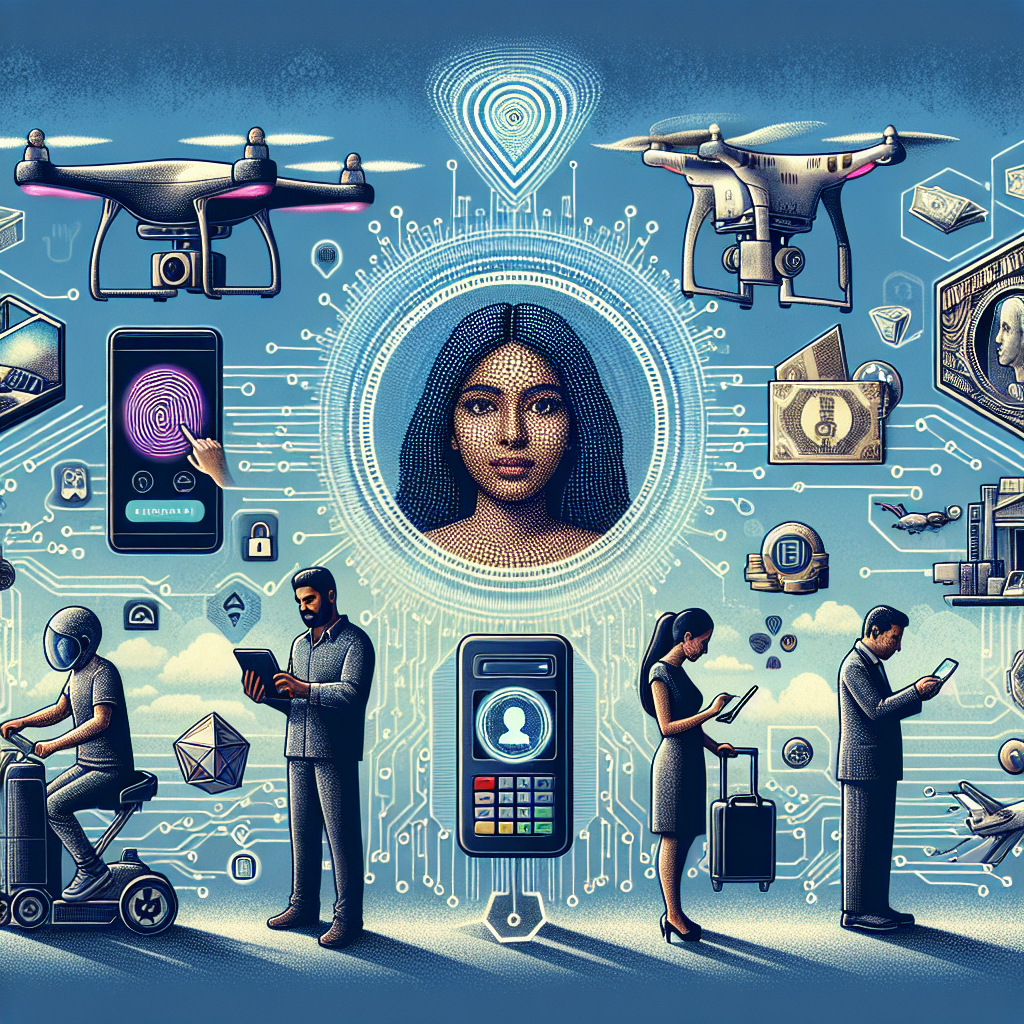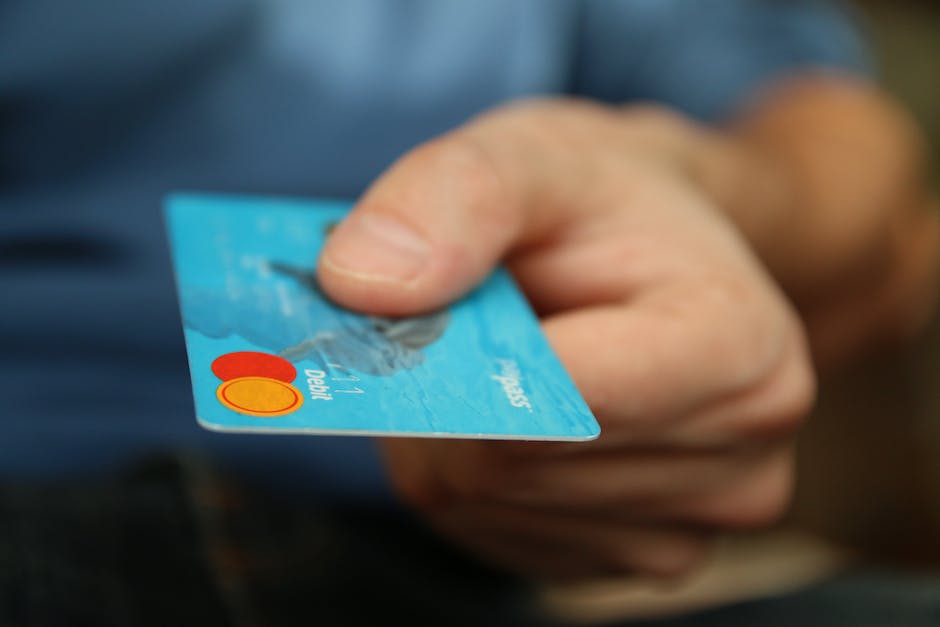-
Table of Contents
- The Rise of Contactless Payments: Exploring the Future of Tap-and-Go Technology
- Cryptocurrencies and Blockchain: Revolutionizing the Payment Landscape
- Biometric Authentication: Enhancing Security in Payment Transactions
- The Role of Artificial Intelligence in Streamlining Payment Processes
- The Internet of Things (IoT) and Payments: How Connected Devices are Transforming the Payment Industry
- Q&A
The Rise of Contactless Payments: Exploring the Future of Tap-and-Go Technology
The Rise of Contactless Payments: Exploring the Future of Tap-and-Go Technology
In recent years, contactless payments have become increasingly popular, revolutionizing the way we make transactions. This technology allows consumers to make payments simply by tapping their cards or mobile devices on a payment terminal, eliminating the need for physical cash or even swiping a card. As we look to the future, it is clear that contactless payments will continue to shape the way we conduct business and handle our finances.
One of the key drivers behind the rise of contactless payments is the convenience it offers. With a simple tap, consumers can complete a transaction in a matter of seconds, making it faster and more efficient than traditional payment methods. This speed is particularly appealing in busy environments such as retail stores, where long queues can deter customers. By reducing transaction times, contactless payments not only improve the customer experience but also increase the efficiency of businesses.
Another factor contributing to the popularity of contactless payments is the increased security it provides. With traditional payment methods, there is always a risk of card skimming or theft. However, contactless payments use advanced encryption technology, making it extremely difficult for fraudsters to intercept and misuse card information. Additionally, many contactless payment systems have built-in security features such as transaction limits and authentication requirements, further enhancing the safety of these transactions.
The future of contactless payments looks promising, with several trends and innovations on the horizon. One such trend is the integration of contactless payments into wearable devices. Smartwatches and fitness trackers are already capable of making contactless payments, and this technology is expected to become more widespread in the coming years. This integration allows consumers to make payments without the need for a physical card or even a smartphone, further streamlining the payment process.
Another innovation in contactless payments is the use of biometric authentication. This technology utilizes unique physical characteristics such as fingerprints or facial recognition to verify the identity of the user. By incorporating biometric authentication into contactless payments, the level of security is significantly increased, as it becomes nearly impossible for someone to make a fraudulent transaction without the authorized user’s biometric data.
Furthermore, the rise of contactless payments has also paved the way for the development of peer-to-peer (P2P) payment systems. These systems allow individuals to transfer money to each other directly, without the need for cash or checks. P2P payment apps such as Venmo and PayPal have gained popularity in recent years, and this trend is expected to continue. As more people embrace contactless payments, the demand for P2P payment systems is likely to grow, further transforming the way we handle our finances.
In conclusion, contactless payments have revolutionized the way we make transactions, offering convenience, speed, and enhanced security. As we look to the future, it is clear that contactless payments will continue to evolve and shape the way we conduct business and handle our finances. With trends such as wearable integration, biometric authentication, and the rise of P2P payment systems, the future of contactless payments looks promising. As businesses and consumers embrace these innovations, we can expect a more seamless and secure payment experience in the years to come.
Cryptocurrencies and Blockchain: Revolutionizing the Payment Landscape
Cryptocurrencies and Blockchain: Revolutionizing the Payment Landscape
In recent years, cryptocurrencies and blockchain technology have emerged as disruptive forces in the world of finance. These innovative technologies have the potential to revolutionize the payment landscape, offering faster, more secure, and more efficient transactions. As businesses and consumers increasingly embrace digital payments, cryptocurrencies and blockchain are poised to play a significant role in shaping the future of payments.
One of the key advantages of cryptocurrencies is their ability to facilitate peer-to-peer transactions without the need for intermediaries such as banks. This decentralized nature of cryptocurrencies eliminates the need for traditional financial institutions, reducing transaction costs and increasing efficiency. Additionally, cryptocurrencies offer greater security and privacy compared to traditional payment methods, as transactions are recorded on a public ledger known as the blockchain.
Blockchain technology, the underlying technology behind cryptocurrencies, is also transforming the payment landscape. Blockchain is a distributed ledger that records all transactions across a network of computers, making it virtually impossible to alter or tamper with transaction records. This transparency and immutability make blockchain an ideal solution for secure and traceable payments.
One of the most significant trends in the cryptocurrency and blockchain space is the rise of stablecoins. Stablecoins are cryptocurrencies that are pegged to a stable asset, such as a fiat currency like the US dollar. These digital currencies offer the benefits of cryptocurrencies, such as fast and secure transactions, while also providing stability in value. Stablecoins have gained popularity as they address the volatility issues associated with traditional cryptocurrencies like Bitcoin.
Another trend in the payment landscape is the integration of cryptocurrencies into mainstream financial services. Major financial institutions and payment processors are starting to embrace cryptocurrencies, allowing customers to buy, sell, and hold digital assets. This integration not only provides consumers with more options for payments but also increases the legitimacy and acceptance of cryptocurrencies.
Furthermore, central banks around the world are exploring the concept of central bank digital currencies (CBDCs). CBDCs are digital versions of fiat currencies issued and regulated by central banks. These digital currencies would operate on blockchain technology, offering the benefits of cryptocurrencies while maintaining the stability and control of traditional fiat currencies. CBDCs have the potential to streamline cross-border payments, reduce transaction costs, and enhance financial inclusion.
In addition to cryptocurrencies and blockchain, other emerging technologies are also shaping the future of payments. For instance, biometric authentication, such as fingerprint or facial recognition, is being integrated into payment systems, enhancing security and convenience. Moreover, the Internet of Things (IoT) is enabling connected devices to make autonomous payments, further simplifying the payment process.
As the world becomes increasingly digital, the future of payments lies in the hands of cryptocurrencies and blockchain technology. These disruptive innovations offer faster, more secure, and more efficient transactions, revolutionizing the way we pay for goods and services. With the rise of stablecoins, the integration of cryptocurrencies into mainstream financial services, and the exploration of CBDCs, the payment landscape is undergoing a significant transformation. As businesses and consumers embrace these technologies, the future of payments looks promising, paving the way for a more seamless and inclusive financial ecosystem.
Biometric Authentication: Enhancing Security in Payment Transactions

The Future of Payments: Trends and Innovations
Biometric Authentication: Enhancing Security in Payment Transactions
In today’s digital age, where technology is advancing at an unprecedented pace, the way we make payments is also evolving. Gone are the days when cash was king, and credit cards were the primary mode of payment. With the rise of mobile wallets and contactless payments, the future of payments is becoming increasingly digital. However, as the payment landscape changes, so do the security risks associated with it. This is where biometric authentication comes into play, offering a robust solution to enhance security in payment transactions.
Biometric authentication refers to the use of unique physical or behavioral characteristics to verify a person’s identity. This technology has gained significant traction in recent years, with the widespread adoption of fingerprint sensors on smartphones. However, biometric authentication goes beyond just fingerprints. It encompasses a range of biometric identifiers, including facial recognition, voice recognition, iris scanning, and even behavioral biometrics such as typing patterns and gait analysis.
One of the key advantages of biometric authentication is its ability to provide a higher level of security compared to traditional authentication methods. Unlike passwords or PINs, which can be easily forgotten or stolen, biometric identifiers are unique to each individual and difficult to replicate. This makes it extremely difficult for fraudsters to impersonate someone else and carry out unauthorized transactions.
Moreover, biometric authentication offers a more convenient and seamless user experience. With traditional authentication methods, users often have to remember multiple passwords or carry around physical tokens. Biometrics eliminate the need for such cumbersome processes, allowing users to simply use their own body parts to authenticate themselves. This not only saves time but also reduces the risk of human error.
The adoption of biometric authentication in payment transactions is already well underway. Many smartphones now come equipped with fingerprint sensors, allowing users to unlock their devices and make payments with a simple touch of their finger. In addition, facial recognition technology has also gained popularity, with Apple’s Face ID being a prime example. By simply looking at their device, users can authenticate themselves and authorize payments.
However, the future of biometric authentication goes beyond just smartphones. We are already seeing biometric payment cards being introduced, which allow users to make contactless payments by simply placing their finger on a sensor embedded in the card. This eliminates the need for a PIN and provides an added layer of security.
Furthermore, biometric authentication is not limited to physical devices. It can also be integrated into online payment platforms, offering a secure and convenient way to make digital payments. For example, some online payment providers are exploring the use of facial recognition technology to verify the identity of users during the payment process. This not only enhances security but also reduces the risk of fraud and chargebacks.
In conclusion, biometric authentication is set to play a crucial role in the future of payments. With its ability to provide enhanced security and a seamless user experience, it is no wonder that this technology is gaining widespread adoption. As we continue to embrace digital payments, it is imperative that we prioritize security. Biometric authentication offers a robust solution to combat fraud and protect sensitive payment information. Whether it is through fingerprint sensors, facial recognition, or other biometric identifiers, the future of payments is undoubtedly biometric.
The Role of Artificial Intelligence in Streamlining Payment Processes
The Role of Artificial Intelligence in Streamlining Payment Processes
In today’s fast-paced digital world, businesses are constantly seeking ways to streamline their payment processes. One of the most promising technologies that can help achieve this goal is artificial intelligence (AI). AI has the potential to revolutionize the way payments are made, making them faster, more secure, and more convenient for both businesses and consumers.
One of the key areas where AI can make a significant impact is fraud detection and prevention. Traditional methods of fraud detection often rely on manual review and analysis, which can be time-consuming and prone to errors. AI, on the other hand, can analyze vast amounts of data in real-time, identifying patterns and anomalies that may indicate fraudulent activity. By using AI-powered algorithms, businesses can detect and prevent fraud more effectively, saving both time and money.
Another area where AI can streamline payment processes is customer service. AI-powered chatbots and virtual assistants can handle customer inquiries and provide support 24/7, reducing the need for human intervention. These AI-powered assistants can answer frequently asked questions, provide information about payment options, and even assist with transaction disputes. By automating these tasks, businesses can improve customer satisfaction and free up their human resources for more complex and value-added activities.
AI can also play a crucial role in personalizing the payment experience. By analyzing customer data, AI algorithms can identify individual preferences and tailor payment options accordingly. For example, AI can suggest personalized payment plans based on a customer’s purchase history or offer targeted discounts and promotions. This level of personalization not only enhances the customer experience but also increases customer loyalty and engagement.
Furthermore, AI can simplify and expedite the payment process itself. Voice recognition technology, powered by AI, allows customers to make payments using voice commands, eliminating the need for manual input. This not only saves time but also reduces the risk of errors. Additionally, AI can enable biometric authentication, such as facial recognition or fingerprint scanning, making payments more secure and convenient.
The integration of AI with other emerging technologies, such as blockchain, can further enhance the efficiency and security of payment processes. Blockchain technology, known for its decentralized and transparent nature, can be combined with AI to create a secure and tamper-proof payment infrastructure. AI algorithms can analyze blockchain data to detect suspicious transactions or identify potential vulnerabilities, ensuring the integrity of the payment system.
While the potential benefits of AI in streamlining payment processes are immense, it is important to address the challenges and risks associated with its implementation. Privacy concerns, data security, and ethical considerations must be carefully addressed to build trust and ensure the responsible use of AI in payments.
In conclusion, AI has the potential to revolutionize payment processes by streamlining fraud detection, improving customer service, personalizing the payment experience, simplifying the payment process, and enhancing security through integration with blockchain technology. As businesses continue to embrace digital transformation, AI will play an increasingly important role in shaping the future of payments. By leveraging the power of AI, businesses can stay ahead of the competition, enhance customer satisfaction, and drive innovation in the payment industry.
The Internet of Things (IoT) and Payments: How Connected Devices are Transforming the Payment Industry
The Internet of Things (IoT) has become a buzzword in recent years, and for good reason. This network of interconnected devices has the potential to revolutionize various industries, including payments. The IoT refers to the concept of everyday objects being connected to the internet and able to communicate with each other. From smart refrigerators that can order groceries to wearable devices that can make payments, the possibilities are endless.
One of the most significant ways that the IoT is transforming the payment industry is through the concept of connected commerce. Connected commerce refers to the ability of devices to initiate and complete transactions without human intervention. For example, imagine a scenario where your car is low on fuel. Instead of stopping at a gas station and paying with cash or a credit card, your car communicates with the gas pump and automatically pays for the fuel. This seamless and frictionless payment experience is made possible by the IoT.
Another area where the IoT is making waves in the payment industry is through the use of wearable devices. Wearable devices, such as smartwatches and fitness trackers, are becoming increasingly popular. These devices can not only track your steps and monitor your heart rate but also make payments. With a simple tap of your wrist, you can pay for your morning coffee or groceries. This convenience is driving the adoption of wearable payments and is expected to continue to grow in the future.
In addition to connected commerce and wearable payments, the IoT is also enabling new payment methods and technologies. For example, biometric authentication is becoming more prevalent in the payment industry. Biometric authentication uses unique physical or behavioral characteristics, such as fingerprints or facial recognition, to verify a person’s identity. With the IoT, biometric authentication can be seamlessly integrated into various devices, such as smartphones or payment terminals, making payments more secure and convenient.
Furthermore, the IoT is also enabling the rise of smart cities, which have the potential to transform the way we make payments. Smart cities use IoT technologies to improve the quality of life for their residents by optimizing various aspects of urban living, including transportation, energy, and payments. For example, in a smart city, parking meters can be connected to the internet and accept payments through mobile apps, eliminating the need for coins or credit cards. This not only improves the convenience for drivers but also reduces the cost and maintenance associated with traditional parking meters.
As the IoT continues to evolve, so too will the payment industry. The possibilities are endless, and we can expect to see even more innovative payment solutions in the future. However, with these innovations come challenges. Security and privacy are major concerns when it comes to the IoT and payments. With more devices connected to the internet, there is an increased risk of data breaches and unauthorized access. It is crucial for businesses and consumers to prioritize security and implement robust measures to protect sensitive payment information.
In conclusion, the IoT is transforming the payment industry in numerous ways. From connected commerce to wearable payments, the IoT is enabling seamless and convenient payment experiences. Additionally, the IoT is driving the adoption of new payment methods and technologies, such as biometric authentication. Furthermore, the IoT is paving the way for smart cities, where payments are integrated into various aspects of urban living. However, with these innovations come challenges, and security and privacy must be prioritized. The future of payments is undoubtedly intertwined with the IoT, and businesses and consumers must embrace these changes to stay ahead in the rapidly evolving payment landscape.
Q&A
1. What are some key trends in the future of payments?
– Increased adoption of mobile payments
– Growth of contactless and digital wallets
– Rise of biometric authentication for secure transactions
– Integration of blockchain technology for faster and more transparent payments
– Expansion of peer-to-peer payment platforms
2. How will mobile payments impact the future of payments?
– Mobile payments will become more prevalent, allowing consumers to make transactions conveniently using their smartphones.
– It will lead to a decrease in the use of physical cash and traditional payment methods.
– Mobile payments offer enhanced security features and faster transaction processing.
3. What role will biometric authentication play in the future of payments?
– Biometric authentication, such as fingerprint or facial recognition, will provide a more secure and convenient way to authorize payments.
– It will reduce the reliance on passwords and PINs, making transactions more secure and less prone to fraud.
4. How will blockchain technology impact the future of payments?
– Blockchain technology will enable faster and more transparent transactions by eliminating intermediaries and reducing processing times.
– It will enhance security and reduce the risk of fraud by creating a decentralized and immutable ledger for payment transactions.
5. What are some emerging innovations in the future of payments?
– Internet of Things (IoT) payments, where connected devices can make transactions autonomously.
– Voice-activated payments, allowing users to make payments using voice commands.
– Augmented reality (AR) and virtual reality (VR) payments, enabling immersive and interactive payment experiences.
– Cryptocurrency payments, offering decentralized and borderless transactions.







